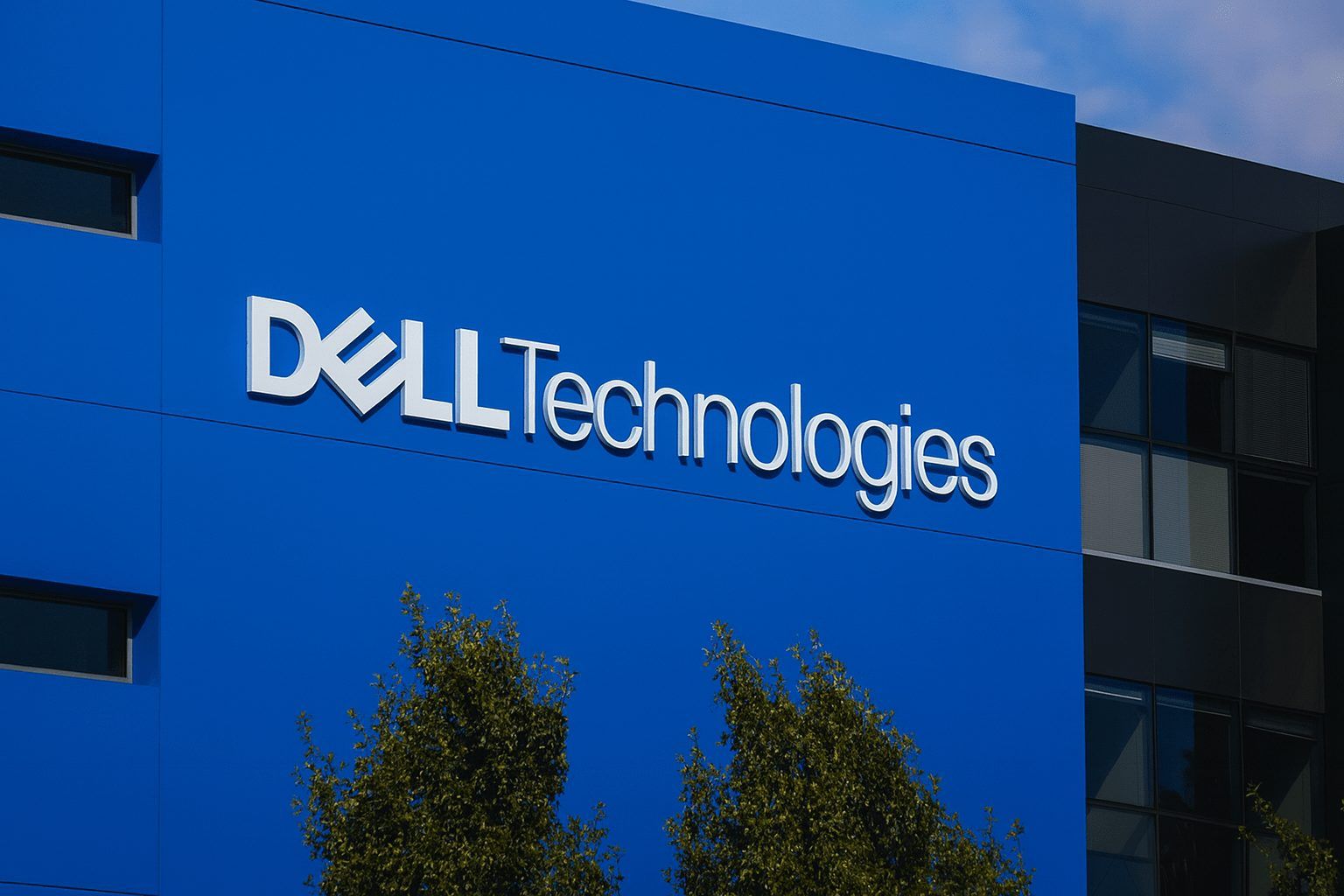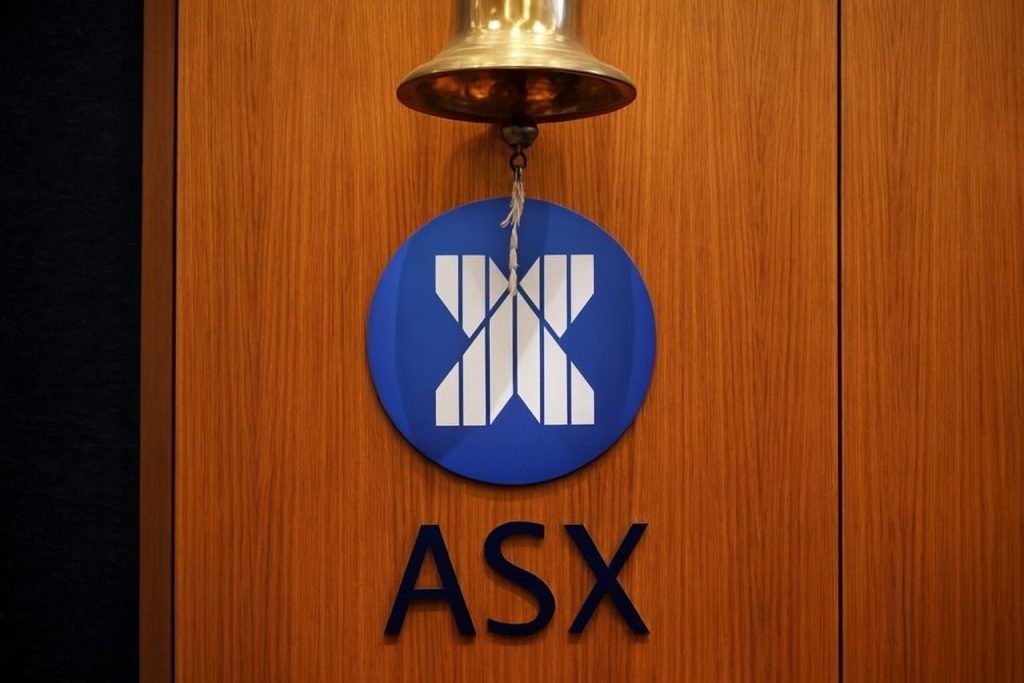Dell Technologies (NYSE: DELL) stock is heading into the weekend on firmer ground after a sharp rebound on Friday, November 21, 2025. Shares climbed just over 4% to close at $122.51, snapping a two‑day losing streak and outperforming the broader U.S. market. [1]
The move comes at a pivotal moment: Dell is set to report Q3 fiscal 2026 earnings on Tuesday, November 25, with Wall Street laser‑focused on how booming AI server demand balances against rising component costs and execution risks in the company’s ambitious transformation plans. [2]
Dell Technologies stock price today: key numbers
Although U.S. markets are closed on Saturday, November 22, investors looking at today’s Dell Technologies stock picture are really looking back at Friday’s session, the latest available trading data.
Key stats as of the close on November 21, 2025:
- Closing price: $122.51
- Daily move: +4.35% vs. S&P 500’s +0.98% and Dow’s +1.08% [3]
- Day’s range: $116.56 – $123.46 [4]
- 52‑week range: $66.25 – $168.08 [5]
- Distance from 52‑week high: ~27% below the peak of $168.08 set on November 3, 2025 [6]
- Volume: ~8.4 million shares, above the roughly 7.3 million 50‑day average [7]
- Market cap: around $82 billion [8]
Over the past year, Dell shares are down around the mid‑teens in percentage terms despite a big run earlier in 2025, reflecting a sharp pullback from the AI‑fueled highs of late summer and early autumn. [9]
Why DELL rallied on Friday
Friday’s bounce wasn’t happening in a vacuum. It looked more like a relief rally after a bruising week driven by fresh analyst downgrades and worries about hardware input costs.
1. Rebound after a downgrade‑driven slide
Earlier in the week, Morgan Stanley double‑downgraded Dell from Overweight to Underweight, cutting its price target from $144 to $110. The firm argued that a richer mix of AI servers, combined with surging DRAM and NAND memory prices, could squeeze margins and force a reset in earnings expectations. [10]
That call helped trigger a steep drop in the shares on November 17, when Dell fell more than 8% in a single session, extending a slide from the early‑November highs above $160. [11]
2. Mixed but still constructive analyst sentiment
The Morgan Stanley move wasn’t the only cautious voice. Bank of America also trimmed its Dell price target from $170 to $160, citing the same pressure from rising memory costs. However, its analyst still expects AI server demand to stay strong long term and sees earnings potentially topping $19 per share by 2030, helped by a roughly 15% compound annual growth rate (CAGR) driven by AI servers and AI PCs. [12]
Despite the recent downgrades, the broader analyst community remains generally positive. MarketBeat data shows Dell carrying a “Moderate Buy” consensus, with an average price target around $161, implying meaningful upside from current levels. [13]
3. Dip‑buying after a sharp reset
With Dell now trading roughly a quarter below its 52‑week high and at a discount to many AI‑linked peers on sales multiples, Friday’s session likely attracted value‑oriented dip‑buyers, especially those who see the AI narrative as intact despite near‑term margin pressures. Zacks, for example, notes that Dell’s forward price‑to‑sales ratio sits far below the broader tech sector and gives the stock a top‑tier “Value Score of A.” [14]
Q3 FY 2026 earnings: expectations are high
The next big catalyst for Dell Technologies stock is its Q3 fiscal 2026 earnings report on Tuesday, November 25, 2025.
Consensus numbers
Across several data providers:
- EPS expectations: around $2.47–$2.49 per share
- Revenue expectations: about $27.3 billion
- Implied year‑over‑year growth: roughly 11–12% on revenue and mid‑teens on EPS [15]
Zacks estimates Q3 revenue near $27.27 billion and EPS around $2.48, both pointing to healthy double‑digit growth versus last year. [16]
What Dell has already guided
On its Q2 FY 2026 call in August, Dell management raised full‑year guidance after a blowout quarter:
- Q2 revenue: a record $29.8 billion, up 19% year over year
- Q2 EPS: $2.32, also a record, up 19%
- Infrastructure Solutions Group (ISG) revenue: $16.8 billion, up 44%, with servers and networking up 69%
- AI server shipments: $8.2 billion in the quarter with an $11.7 billion AI backlog
- Full‑year revenue guidance: lifted to $105–$109 billion
- Full‑year EPS guidance: midpoint around $9.55, implying ~17% growth [17]
The bar for Q3 is therefore not low. Investors will be watching whether Dell can keep AI momentum strong while showing that margins are stabilising despite higher memory and component costs.
AI remains Dell’s main growth engine
Much of the Dell Technologies stock story in 2025 is really the AI infrastructure story.
Aggressive long‑term growth targets
In October, Dell nearly doubled its long‑term profit growth ambitions, now projecting:
- Adjusted EPS growth: at least 15% per year through fiscal 2030 (up from ~8%)
- Revenue growth:7–9% annually (up from 3–4%)
- AI server shipments: targeting about $20 billion in AI server revenue by 2026 [18]
These targets are explicitly tied to surging demand for AI‑capable servers, storage, and networking, with Dell highlighting customers such as xAI and CoreWeave among its flagship AI clients. [19]
SC25: AI Factory and Nvidia‑powered infrastructure
At the SC25 supercomputing conference, Dell unveiled a fresh wave of upgrades to its AI Factory with Nvidia offering. Among the highlights: [20]
- AI Factory enhancements: Dell’s ObjectScale and PowerScale storage now integrate with Nvidia’s NIM/NIXL libraries to streamline AI model deployment at data‑center scale.
- New AI servers: AI Factory now includes PowerEdge XE7740 and XE7745 systems, built around Nvidia’s latest Hopper and Blackwell‑based accelerators.
- Automation platform: Dell’s Automation Platform is now part of AI Factory, designed to simplify deployment and lifecycle management of complex AI clusters.
Simultaneously, Dell has been talking up its SONiC‑based Ethernet fabric and AI networking enhancements, pushing the idea of “AI factories” as the new backbone of modern data centers. [21]
Strategic partnerships: Microsoft, IREN, and beyond
The AI opportunity is not just theoretical. A recent example: Microsoft’s $9.7 billion, five‑year deal with AI cloud provider IREN includes a separate $5.8 billion agreement with Dell for GPUs and data center equipment that will power Texas‑based AI infrastructure deployments over the next year. [22]
Zacks notes that Dell’s expanding partner list now includes Nvidia, Microsoft, Meta, AMD, and AI specialist Imbue, positioning the company as a central player in enterprise‑grade AI infrastructure. [23]
Margin, memory and execution risks are front and center
For all the upside in AI, the market’s recent jitters around Dell revolve around profitability and execution.
Rising memory prices threaten margins
Morgan Stanley’s double‑downgrade zeroed in on the risk that Dell, as a major AI server OEM, is highly exposed to soaring DRAM and NAND prices. The firm expects heavier AI server mix and more expensive memory to compress gross and operating margins, prompting it to cut its 2027 margin forecasts and EPS estimates. [24]
Bank of America echoed these concerns when it trimmed its Dell target to $160, pointing to the same memory price pressure, even as it remained optimistic about long‑term AI demand. [25]
Project Maverick: delayed internal transformation
Adding to the execution overhang, Dell’s secretive internal IT modernization push, “Project Maverick,” has run into delays.
- The initiative aims to simplify a sprawling internal environment of roughly 4,700 applications, 70,000 servers and 10,000+ databases, replacing decades‑old systems with a unified, AI‑ready architecture. [26]
- According to Business Insider and Benzinga, the first big phase, originally slated for early 2026, has been pushed back by about three months, with rollout across Dell’s two major divisions now scheduled for May and August 2026.
- An internal memo from COO Jeff Clarke reportedly cites scalability and readiness concerns as reasons for the delay, saying the system works but is “not yet ready” to handle Dell’s global load. [27]
While the delay doesn’t directly hit near‑term revenue, it underlines the operational complexity of transforming a legacy IT giant for the AI era, and investors will be watching for any sign that internal friction spills over into customer‑facing performance.
What Wall Street is saying about DELL stock
Analyst views on Dell Technologies have become more nuanced as the stock reprices from its peaks.
- Overall rating: MarketBeat and Barchart both peg Dell as a “Moderate Buy”, based on a mix of Buy, Hold and a small number of Sell ratings. [28]
- Average price target: around $160–$161, implying solid double‑digit upside relative to Friday’s close. [29]
- Valuation: Dell trades at a mid‑teens earnings multiple and a low price‑to‑sales ratio (~0.7x) compared with over 6x for the broader tech sector, according to Zacks, supporting the “value” narrative. [30]
- Zacks stance: Zacks assigns Dell a Rank #3 (Hold)—effectively suggesting investors may want to wait for a better entry point—while still highlighting the AI server franchise and partner ecosystem as long‑term positives. [31]
- Independent research: Some independent equity researchers maintain “Strong Buy” views with targets around $160, arguing that Dell is “cheap, profitable, and ready to ride the AI and cloud wave” despite recent volatility. [32]
In short, Wall Street broadly agrees that Dell has real AI momentum, but differs on how much of that is already priced in given the margin headwinds and recent run‑up earlier in the year.
What today’s setup means for investors
With Dell Technologies stock rebounding above $120 heading into the November 22 weekend, the setup for the coming week is unusually binary:
Bullish arguments
- AI infrastructure leadership: Dell is shipping record AI servers with a multi‑billion‑dollar backlog and upgraded long‑term growth targets. [33]
- Attractive valuation: The stock trades at a notable discount on sales and a reasonable earnings multiple versus many AI‑linked peers, while still offering a growing dividend (recent quarterly payout of $0.525 per share). [34]
- Deep partnerships: Tie‑ups with Nvidia, Microsoft, and IREN highlight Dell’s strategic relevance in large‑scale AI build‑outs. [35]
Bearish and cautious arguments
- Margin pressure: Rising DRAM and NAND prices may blunt the profitability of AI servers, especially with hyperscalers and large enterprises pushing hard on price. [36]
- Execution risk: Internal transformation delays (Project Maverick) and the complexity of scaling AI infrastructure introduce operational risk. [37]
- Earnings bar is high: After back‑to‑back record quarters and raised guidance, any Q3 miss or cautious commentary—especially on margins—could trigger another leg down. [38]
What to watch on Tuesday
For anyone tracking Dell Technologies stock around November 22–25, key things to listen for in the upcoming earnings release and call include:
- AI server growth vs. backlog: Is demand still accelerating, and is the AI backlog growing or normalising? [39]
- Margin commentary: How are memory prices, product mix, and competitive pricing affecting gross margins in both ISG and Client Solutions Group? [40]
- Updated guidance: Does management reaffirm or tweak its full‑year outlook and multi‑year AI targets? [41]
- Project Maverick and internal modernization: Any hints on progress or costs associated with the delayed internal overhaul could help investors gauge execution risk. [42]
Bottom line:
As of today (November 22, 2025), Dell Technologies stock sits at the intersection of powerful AI‑driven growth tailwinds and very real margin and execution risks. Friday’s rally shows investors aren’t ready to abandon the AI infrastructure story, but next week’s earnings report will go a long way toward deciding whether DELL’s latest dip is a buying opportunity or a warning sign.
This article is for informational purposes only and does not constitute investment advice. Always do your own research or consult a licensed financial professional before making investment decisions.
References
1. www.marketwatch.com, 2. www.tipranks.com, 3. www.marketwatch.com, 4. www.marketwatch.com, 5. www.marketwatch.com, 6. www.marketwatch.com, 7. www.marketwatch.com, 8. www.marketwatch.com, 9. www.investing.com, 10. finviz.com, 11. www.investing.com, 12. www.benzinga.com, 13. www.marketbeat.com, 14. www.nasdaq.com, 15. www.nasdaq.com, 16. www.nasdaq.com, 17. www.tipranks.com, 18. www.reuters.com, 19. www.reuters.com, 20. www.itpro.com, 21. siliconangle.com, 22. apnews.com, 23. www.nasdaq.com, 24. finviz.com, 25. www.benzinga.com, 26. www.businessinsider.com, 27. www.businessinsider.com, 28. www.marketbeat.com, 29. www.marketbeat.com, 30. www.nasdaq.com, 31. www.nasdaq.com, 32. seekingalpha.com, 33. www.tipranks.com, 34. www.marketbeat.com, 35. www.nasdaq.com, 36. finviz.com, 37. www.businessinsider.com, 38. www.tipranks.com, 39. www.tipranks.com, 40. finviz.com, 41. www.reuters.com, 42. www.businessinsider.com







